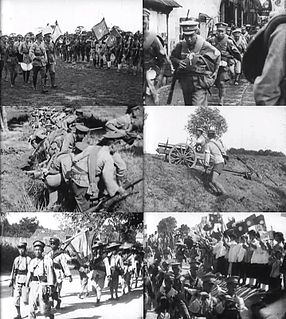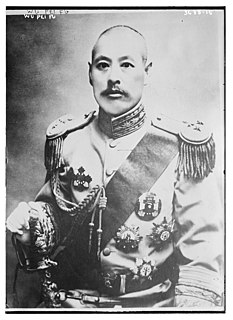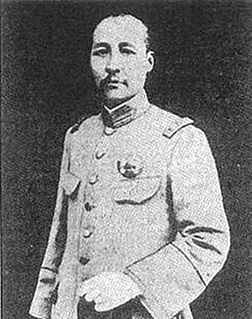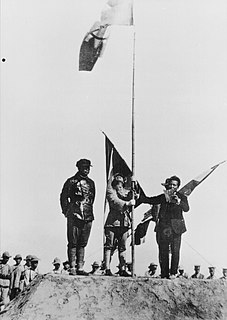
Hu Jingyi胡景翼 (1892–1925), Chinese general, warlord and military governor of Henan (1924–25) during the Warlord Era of China.

A warlord is a leader able to exercise military, economic, and political control over a subnational territory within a sovereign state due to their ability to mobilize loyal armed forces. These armed forces, usually considered militias, are loyal to the warlord rather than to the state regime. Warlords have existed throughout much of history, albeit in a variety of different capacities within the political, economic, and social structure of states or ungoverned territories.
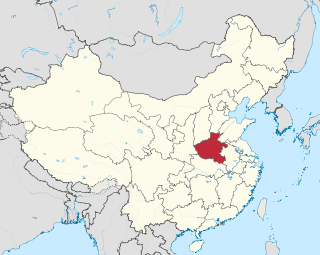
Henan is a province of the People's Republic of China, located in the central part of the country. Henan is often referred to as Zhongyuan or Zhongzhou (中州) which literally means "central plain land" or "midland", although the name is also applied to the entirety of China proper. Henan is the birthplace of Chinese civilization with over 3,000 years of recorded history, and remained China's cultural, economical, and political center until approximately 1,000 years ago.

The Warlord Era was a period in the history of the Republic of China when control of the country was divided among former military cliques of the Beiyang Army and other regional factions, which were spread across the mainland regions of Sichuan, Shanxi, Qinghai, Ningxia, Guangdong, Guangxi, Gansu, Yunnan, and Xinjiang.
Hu Jingyi was born on 4 June 1892, Fuping County, Shaanxi. He joined the Chinese Revolutionary Alliance in 1910. Following the Wuchang Uprising in 1911 he led a revolt in Shaanxi. He became a general of Kuomintang forces during the "Second Revolution" against Yuan Shikai's dictatorship in 1913. He held several posts in the Shaanxi army over the following decades.

Fuping County is a county located in the center of Shaanxi Province, China. It is the westernmost county-level division of the prefecture-level city of Weinan.
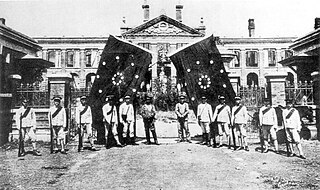
The Wuchang Uprising was an armed rebellion against the ruling Qing dynasty that took place in Wuchang, Hubei, China on October 10, 1911, which was the beginning of the Xinhai Revolution that successfully overthrew China's last imperial dynasty. It was led by elements of the New Army, influenced by revolutionary ideas from Tongmenghui. The uprising and the eventual revolution directly led to the downfall of the Qing dynasty with five millennia of imperial rule, and the establishment of the Republic of China (ROC), which commemorates the anniversary of the uprising's starting date of 10th October as the National Day of the Republic of China.
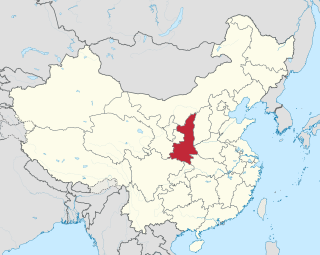
Shaanxi is a province of the People's Republic of China. Officially part of the Northwest China region, it lies in central China, bordering the provinces of Shanxi, Henan (E), Hubei (SE), Chongqing (S), Sichuan (SW), Gansu (W), Ningxia (NW), and Inner Mongolia (N). It covers an area of over 205,000 km2 (79,151 sq mi) with about 37 million people. Xi'an – which includes the sites of the former Chinese capitals Fenghao and Chang'an – is the provincial capital. Xianyang, which served as the Qin dynasty capital, is located nearby. The other prefecture-level cities into which the province is divided are Ankang, Baoji, Hanzhong, Shangluo, Tongchuan, Weinan, Yan'an and Yulin.
During the Second Zhili–Fengtian War in the autumn of 1924, Feng Yuxiang betrayed the Zhili clique when he led his army from the battlefield to execute the Beijing coup, detaining its leader President Cao Kun, and reorganized his forces as the Guominjun. Hu was named deputy commander-in-chief and the commander of the 3rd Army as well as governor of Henan.
The Second Zhili–Fengtian War of 1924 was a conflict between the Japanese-backed Fengtian clique based in Manchuria, and the more liberal Zhili clique controlling Beijing and backed by Anglo-American business interests. The war is considered the most significant in China's Warlord era, with the Beijing coup by Christian warlord Feng Yuxiang leading to the overall defeat of the Zhili clique. During the war the two cliques fought one large battle near Tianjin in October 1924, as well as a number of smaller skirmishes and sieges. Afterwards, both Feng and Zhang Zuolin, the latter being ruler of the Fengtian clique, appointed Duan Qirui as a figurehead prime minister. In south and central China, more liberal Chinese were dismayed by the Fengtian's advance and by the resulting power vacuum. A wave of protests followed. The war also distracted the northern warlords from the Soviet-backed Nationalists based in the southern province of Guangdong, allowing unhampered preparation for the Northern Expedition (1926–1928), which united China under the leadership of Chiang Kai-shek.

Feng Yuxiang was a warlord and leader in Republican China from Chaohu, Anhui. He served as Vice Premier of the Republic of China from 1928-30. He was also known as the Christian General for his zeal to convert his troops and the Betrayal General for his penchant to break with the establishment. In 1911 he was an officer in the ranks of Yuan Shikai's Beiyang Army but joined forces with revolutionaries against the Qing Dynasty. He rose to high rank within Wu Peifu's Zhili warlord faction but launched the Beijing coup in 1924 that knocked Zhili out of power and brought Sun Yat-sen to Beijing. He joined the Nationalist Party (KMT), supported the Northern Expedition and became blood brothers with Chiang Kai-shek, but resisted Chiang's consolidation of power in the Central Plains War and broke with him again in resisting Japanese incursions in 1933. He spent his later years supporting the Revolutionary Committee of the Kuomintang.

The Zhili clique was one of several mutually hostile cliques or factions that split from the Beiyang clique during the Republic of China's warlord era. This fragmentation followed the death of Yuan Shikai, who was the only person capable of keeping the Beiyang Army together. It was named for the general region of the clique's base of power, Zhili Province, now Hebei, and during its height also controlled Jiangsu, Jiangxi, and Hubei.
The Soviets decided to assist Feng with advisers and assistance in arming the Guominjun, with the intent of forming another movement like the KMT in north China. In return for arms, Feng and Hu gave the Russian and Chinese Communists a free hand in their territories. Feng and Hu sent 25 high-ranking officers to the Soviet Union for military training. [1] However, Hu died suddenly in office on 10 April 1925 and was succeeded by Yue Weijun.

The Soviet Union, officially the Union of Soviet Socialist Republics (USSR), was a socialist state in Eurasia that existed from 1922 to 1991. Nominally a union of multiple national Soviet republics, its government and economy were highly centralized. The country was a one-party state, governed by the Communist Party with Moscow as its capital in its largest republic, the Russian Soviet Federative Socialist Republic. Other major urban centres were Leningrad, Kiev, Minsk, Alma-Ata, and Novosibirsk. It spanned over 10,000 kilometres east to west across 11 time zones, and over 7,200 kilometres north to south. It had five climate zones: tundra, taiga, steppes, desert and mountains.
